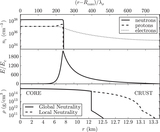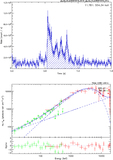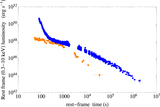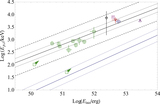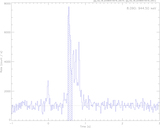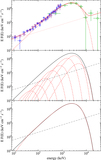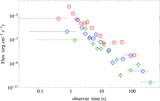Image Details

Caption: Figure 3.
Spacetime diagram of an S-GRB, a binary NS merger leading to BH formation (taken from Enderli et al. 2015, with their kind permission). The binary orbit gradually shrinks due to energy loss through gravitational-wave emission (yellow–brown). At point A, the merger occurs: the fireshell (in red) is created and starts its expansion. It reaches transparency at point B, emitting the P-GRB (light purple). The prompt emission (deep purple) then follows at point C. The dashed lines represent the GeV emission (delayed relative to the start of the GRB) originating in the newly born BH. This spacetime diagram well illustrates how the GeV emission originates in the newly born BH and follows a different spacetime path from the prompt emission, contrary to what is stated in Ackermann et al. (2010). The prompt emission originates from the interactions of the baryons, accelerated to ultrarelativistic Lorentz factors during the pair-baryon electromagnetic pulse, with the clumpy CBM (see Section 2). The analysis of the spiky structure of the prompt emission allows us to infer the structure of the CBM (see Figure 9). There is the distinct possibility that the GeV emission prior to 0.6 s in the arrival time may interact with the prompt emission. In this sense the work by Zou et al. (2011) may become of interest.
Copyright and Terms & Conditions
© 2016. The American Astronomical Society. All rights reserved.



